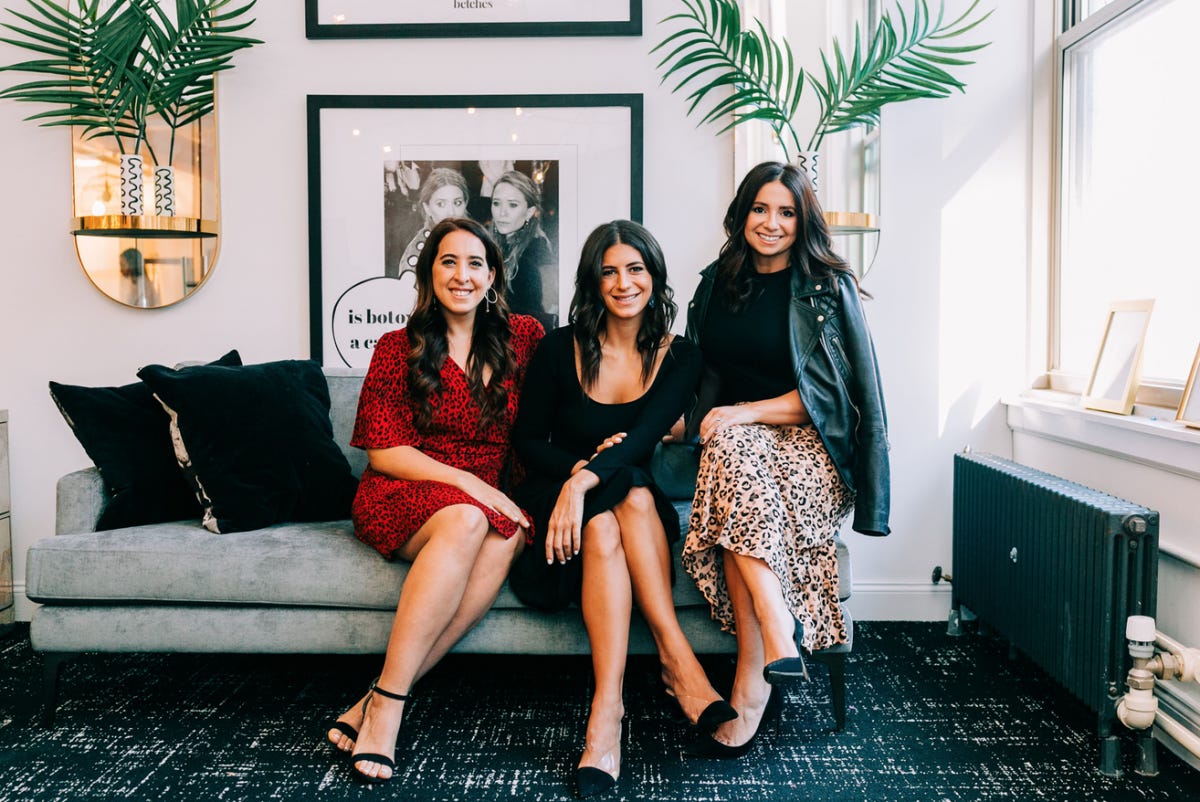Decoding the Creator Economy Part Two: Unlocking career opportunities
In part two of our new series, learn how to break into the creator economy and get started with our curated lists of creator examples and companies hiring.

Hello, and welcome back to “Decoding the Creator Economy,” a three-part series designed to help our readers understand one of the biggest developments of the digital age. If you missed Part One, make sure to check it out here to grasp the magnitude of this economy before we delve deeper into details.
Again, I’m Fiona, your guide throughout this series. I’m hoping your return means I piqued your interest in Part One. Maybe you’re a social media enthusiast looking to turn your internet hobbies into a job. Maybe you’re an aspiring creator looking to bypass media gatekeepers. Whatever the reason, I’m glad you’re back.
My goal in this second installment is to help you harness that interest and possibly channel it into something tangible. I’ll do so by providing you with working lists of the paths to break into this space.
Previously, we discussed the explosion of the creator economy in terms of content, size and economic value. This growth has been pushed by an increase of interested workers, and it will continue to create a wealth of opportunities. According to a report from Creator Economy Jobs, Google searches for “creator economy jobs” are increasing by about 200 percent each year. Fortunately for those job-seekers, there’s also an upward trend in openings, as the report states the number of open roles at creator-related companies rose 66 percent in the second quarter of 2024 compared to the first three months of the year.
So, for those looking to enter this dynamic field, now is a pivotal time to do so.
Don’t Count Us Out Yet founder Craig Gordon said himself, “Today, the creator economy is where radio was in the ‘20s, TV was in the ‘40s and social media was in the first decade of this century.”
Some see this economy as a newfangled thing propelled by modern influencers, while others recognize the concept as having been around for quite some time, originating closer to the rise of the internet platforms.
While the specific season of the creator economy may be up for debate, I do know this about its current state: the creator economy is new enough for people to find new ways to leverage online platforms every single day, yet old enough for many people to have already achieved success through it.
If you have any interest in the field, you’re currently sitting in a sweet spot where you’ll find both untapped potential and blueprints from creators who came before. This duality is exactly how we’ll organize our lists.
Let’s Break Things Down
Our team sees two potential avenues to break into and find success in the creator economy today.
The first path embraces entrepreneurship, meaning building your own brand from scratch online. The second focuses on assimilation, meaning being hired by an existing, pre-established brand in the creator economy.
So, our first list will include examples of people who have created something from nothing online, each in a unique way, for you to use as inspiration. The second list will be complete with examples of internet success stories that are now looking to hire others, serving as not just inspiration, but a potential list of employers. And as you may notice, the examples provided will span the subcategories of creators we discussed in Part One — art, music, writing, video and beyond.
Path One: Entrepreneurial Ventures

1. Emma Chamberlain
Chamberlain is largely recognized online and beyond today. Although she’s just 23, she’s demonstrated both traditional and nontraditional entrepreneurship throughout her career.
She began posting vlogs on YouTube when she was in high school and won over viewers with her comedic and relatable persona, often raving about things like coffee and clothing. As a teenager, she gained millions of subscribers and regularly posted sponsored content in collaboration with brands. This path proved steady enough for her to drop out of high school and skip out on college.
Today, her YouTube channel has 12 million subscribers, and her one-off sponsorships have turned into long term campaigns with brands like Levi’s and Louis Vuitton. Recently, she beckoned her fanbase to another platform, her podcast titled Anything Goes. She’s also capitalized off of a trait that fans loved her for at the beginning, her fondness of coffee, by founding her first company which is now valued at $20 million according to Forbes, Chamberlain Coffee.
2. Andy Weir
Weir took a chance to pursue his passion for writing when he was laid off from his original career as a computer programmer, leveraging his talent to join the creator economy.
“I lived off of my severance for three years… I wrote a book and tried very hard to get an agent. No publishers were interested, no agents,” Weir said in an interview with The Creative Life.
In the face of this resistance, he built a personal website where he self-published his writing for the next 10 years. He gradually built a community and amassed thousands of followers, who would become the first to read a now renowned novel.
Weir posted “The Martian” on his website in 2012, free for his followers to read. When they expressed a desire to read the book elsewhere, he published it as an eBook and on Kindle. Within two months, it was a top-selling novel, and it went on to be adapted into a multi-million dollar, critically-acclaimed blockbuster film starring Matt Damon.
3. Niharikaa Kaur Sodhi
Sodhi is a writer who coaches others on side hustles, mindful living and “solopreneurship.” She quit her day job at age 25 after discovering that writing on LinkedIn and Medium generated a substantial income.
Like her income streams, her number of followers and business ventures grew with time. Now, she is a “LinkedIn Top Voice” and a consistent top writer on Medium. She has expanded her brand into a newsletter focused on writing and content creation, guides to help people with personal branding, and a writing course.
Her brand is a testament to the strength of microculture against macroculture in journalism today, as she has achieved personal success through indie pursuits instead of legacy media.
4. Gary Arndt
Arndt is a professional travel photographer. According to his website, he sold his house in 2007 and has been traveling the world since. Around the same time, he created his website to document his travels.
As social media grew, he expanded to posting photos on various social media platforms. For a while, his fanbase comprised only friends and family. However, with time and dedication, he caught the world’s attention. His website was even named one of the Top 25 Blogs in the World by Time Magazine in 2010.
After the COVID-19 pandemic threw a serious wrench in travel plans, however, Arndt was at a professional and financial standstill. Fortunately, he had a large, loyal following and an idea to start an educational podcast. So, in July 2020, he began posting seven episodes per week to his website, which now generates more than a million downloads per month and more advertising income than he has ever made.
5. Michelle Phan
Phan is a beauty-focused creator and entrepreneur. She’s the founder of several multi-million dollar companies and a YouTuber whose channel has garnered more than a billion views. All of this was made possible by her posting makeup tutorials online during the 2008 recession.
“At that time, you couldn’t make money on YouTube, but I knew that this was a tool,” she told Girlboss. “This could be the future of TV.”
She said she identified a market gap for teaching people about makeup and beauty. Her videos quickly resonated with subscribers, eight million of them to be exact, and eventually lent themselves to further ventures.
She has since built a makeup subscription company called Ipsy, a makeup brand called EM Cosmetics, and a marketplace for creators called Thematic — career moves that have landed her in Forbes’ 30 Under 30.
Path Two: Opportunities With Established Brands

1. Betches
Betches was founded as a humor and pop culture blog in 2011 by Aleen Kuperman, Jordana Abraham and Samantha Fishbein. It has since expanded into a female-led, multimedia company of podcasts, books, merchandise and a large social media following. Their content is diverse, yet typically aimed at millennial women. If you are interested in sales or content creation, Betches is hiring now.
2. The Try Guys
The Try Guys began as a BuzzFeed series in 2014 where four employees, Ned Fulmer, Keith Habersberger, Zach Kornfeld, and Eugene Lee Yang, engaged in comedic activities and videos. The team departed from BuzzFeed and formed an independent company in 2018, and the business has since expanded into podcasts, live shows, merchandise and a boutique streaming service. They maintain a fanbase of millions across social media and typically hire for video production, editing, marketing and social media management.
3. Barstool Sports
Barstool Sports was created by Dave Portnoy in 2003 as a Boston print publication. The brand shifted to a digital format in 2007 and has since expanded into blogs, podcasts, videos and beyond. It’s content and ventures are edgy and comedic, which appeal to its large fanbase. If you have skills in marketing or production and want to work with Barstool Sports, check out it’s hiring list online.
4. Skillshare
Skillshare was founded as an online learning platform by Michael Karnjanaprakorn and Malcolm Ong in 2010. It offered courses on various topics and utilized an approach of experts sharing their knowledge with a global audience. The platform has since grown by implementing user-generated content and a subscription model, and it is described on its website as a “community for creators.” The brand hires for roles in engineering, marketing, content management and more.
5. The Ringer
The Ringer is an online platform focused on sports and pop culture that was created in 2016 by sports writer Bill Simmons after he left careers at ESPN and Grantland. The Ringer’s website has extensive multimedia content, including a large podcast network that was acquired by Spotify in 2020. The brand hires for roles in marketing, editorial, and podcast and video production.
Wrapping It Up
While I hope you find these lists useful, I want to add one final disclaimer. I believe neither path is better than the other, and the two are not going to be forever mutually exclusive. There may be some interplay between different pursuits, which simply means you are free to pick and choose what rings true for you. After all, the creator economy is a highly customizable space.
If anything thus far has resonated with you, stay tuned for Part Three, the final chapter of this series. There, we’ll provide you with the culmination of everything we’ve discussed thus far in “Decoding the Creator Economy,” a how-to guide on breaking into the creator economy.
Best,
Fiona for the Don’t Count Us Out Yet Staff




